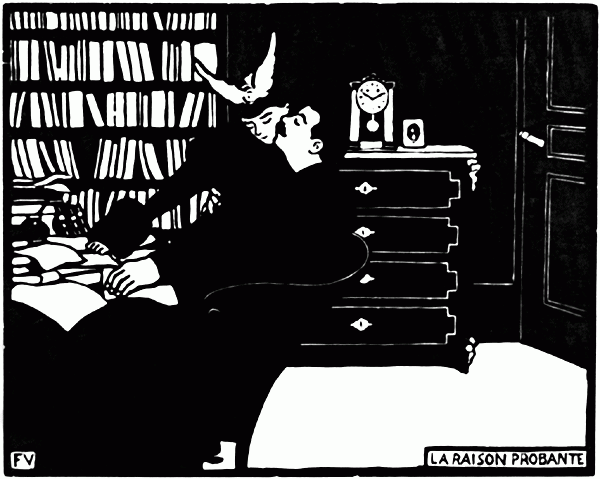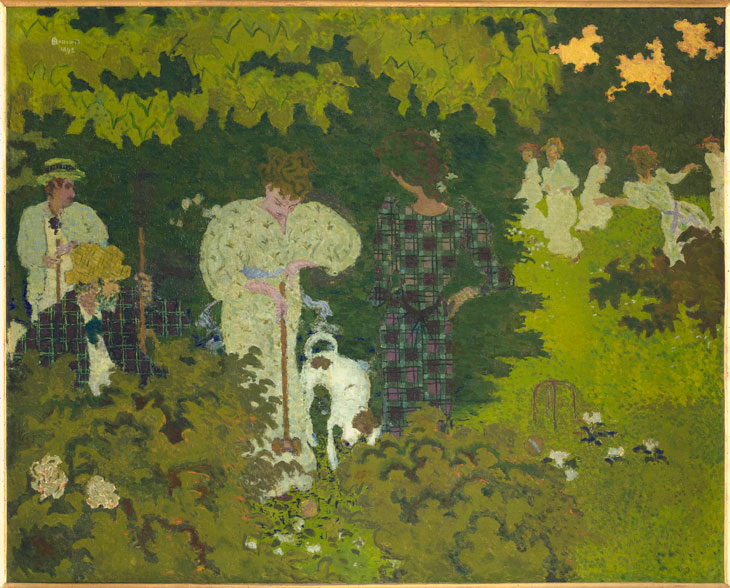The pretty, red-brick Mitsubishi Ichigokan Museum in Tokyo may not be an obvious setting for an exhibition about a sub-group of the French avant-garde. But the overlap between Japanese and French influences makes ‘Murmur and tumult: Masterpieces of Nabis from the Musée d’Orsay’ (until 21 May) an apt survey, which highlights the relationship between two distinct genres. As the title declares, the exhibition borrows many of its works from Paris, with a few pieces from the gallery’s own collection displayed in its final rooms.
Les Nabis were a fin-de-siecle, post-Impressionist group including Pierre Bonnard, Édouard Vuillard, Maurice Denis, Paul Sérusier and Félix Vallotton, whose work focused primarily on images of women, interiors and nature. The word ‘nabi’, Hebrew for ‘prophet’, illustrates the self-consciously spiritual identity that the group adopted, with Sérusier spearheading their collective interest in Symbolist ideas. Considering themselves a creative brotherhood, Les Nabis combined these ideas with other influences – including Japanese printmaking – to create unusual, varied and often otherworldly compositions, infused with mystical or mysterious sub-texts.
‘Japonisme’, the word used to describe the impact of Japanese printmaking (particularly ukiyo-e prints) on Western artists, was coined just a few years after the country took a pavilion at the Paris World’s Fair of 1867. Japanese craftsmen’s use of woodblock printing to produce flat planes of bold, unmodulated colour, as well as the everyday simplicity of their subject matter, both reflected and influenced avant-garde Parisian tastes. The Impressionists were already turning to the ordinary scenes of urbanised Paris – public parks, trips to the beach, fashionable interiors and modern fashions. By the 1890s Les Nabis were approaching the same themes with a new sense of design and decoration – inspired by japoniste aesthetics – which often produced psychologically tense or intriguing narratives.
La raison probante (1897), Félix Vallotton, from the Intimités series

The Tokyo exhibition highlights this mingling of influences through a series of thematically curated galleries. One section, ‘Poétique de l’intime’, emphasises the Japanese use of decoration to create striking and often spatially unsettling domestic scenes, and reveals how Vallotton, Vuillard and Bonnard, seeking fresh perspectives on Paris, looked to these Eastern examples for inspiration. Vallotton’s woodcut series, Les intimités, for example, is clearly influenced by the concise flat shapes and outlines of the Japanese style, as is his striking Misia at her dressing table (1898) or Denis’s earlier Les Muses (1893). In Vuillard’s Le Déjeuner Hessel (1899), dizzying perspectival shifts occur as background and foreground collide, and pulsing colours grapple for attention, anticipating later post-Impressionist styles such as Fauvism.
These artists are often overlooked in blockbuster exhibitions, so is it pleasing to consider their works within their original, multilayered context, rather than as part of a larger show considering post-Impressionism as a whole. This unusual exhibition highlights some fascinating continuities and parallels between seemingly distinct styles. In exploring the combination of Impressionist influences with design-oriented Japanese techniques, the curators reveal how Les Nabis managed to make their scenes of everyday life so strange, unsettling and captivating.
Crépuscule (1892), Pierre Bonnard. © RMN-Grand Palais (musée d’Orsay) / Hervé Lewandowski / distributed by AMF

‘Murmur and Tumult: Masterpieces of Nabis from the Musée d’Orsay’ is at the Mitsubishi Ichigokan Museum, Tokyo, until 21 May.



